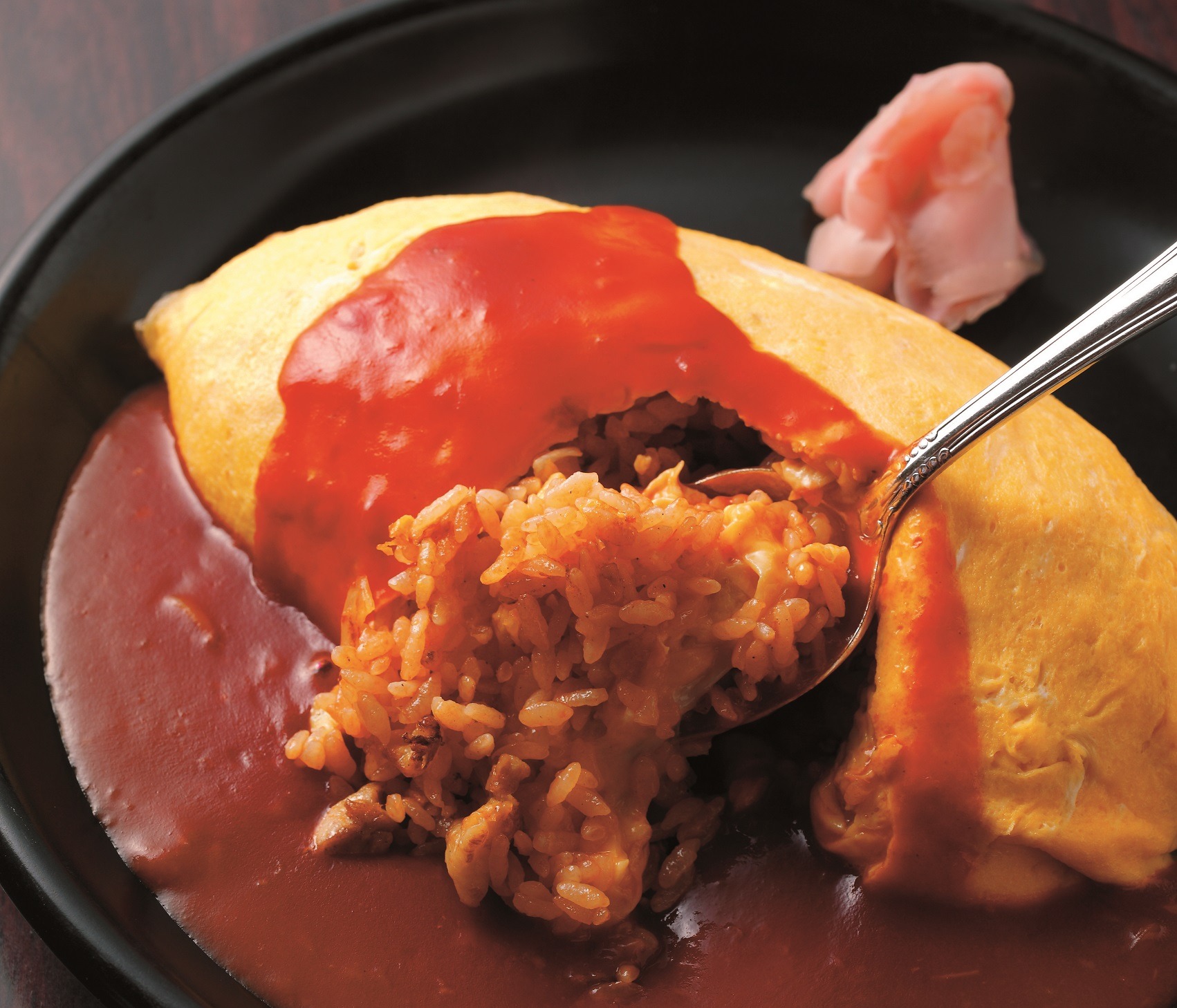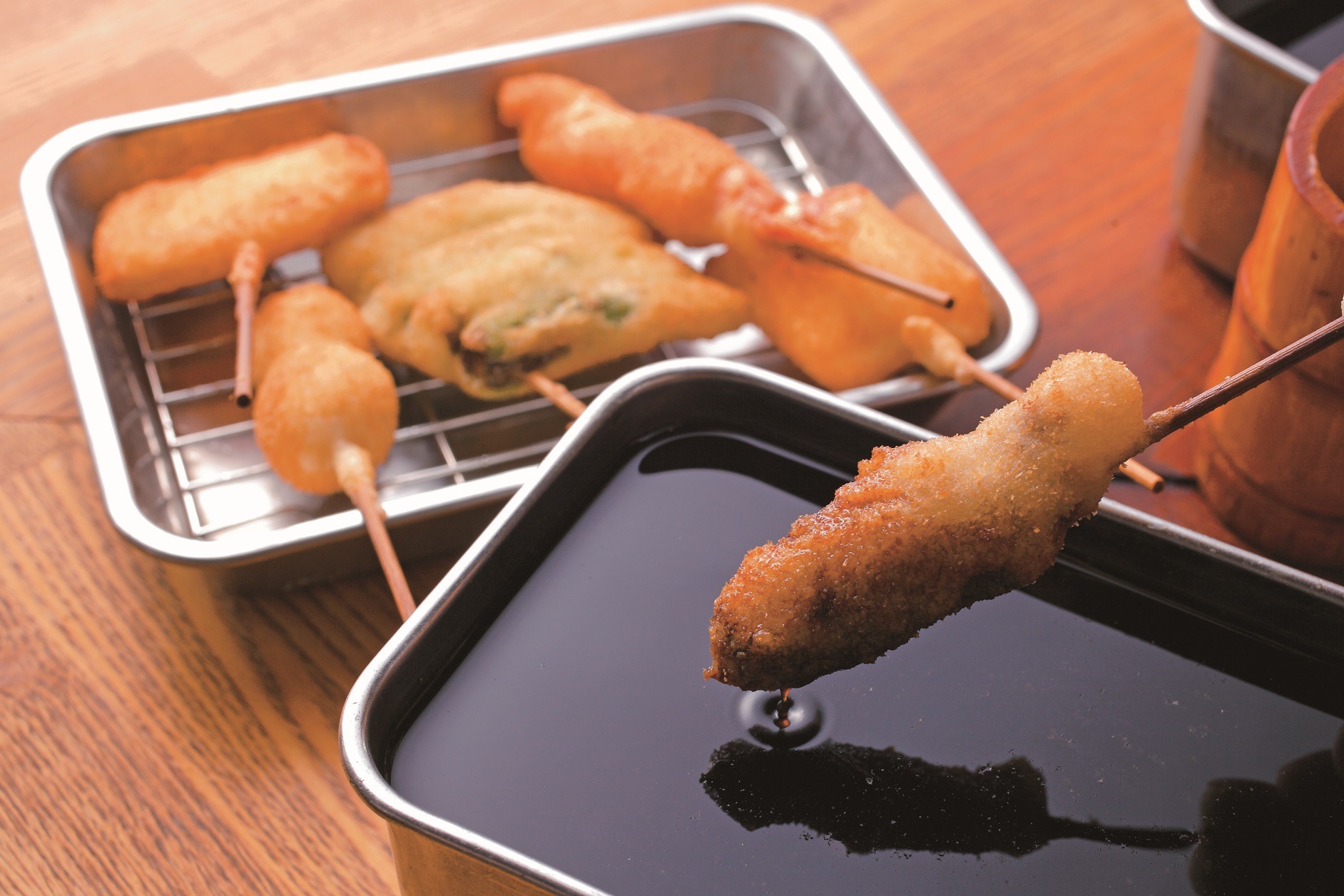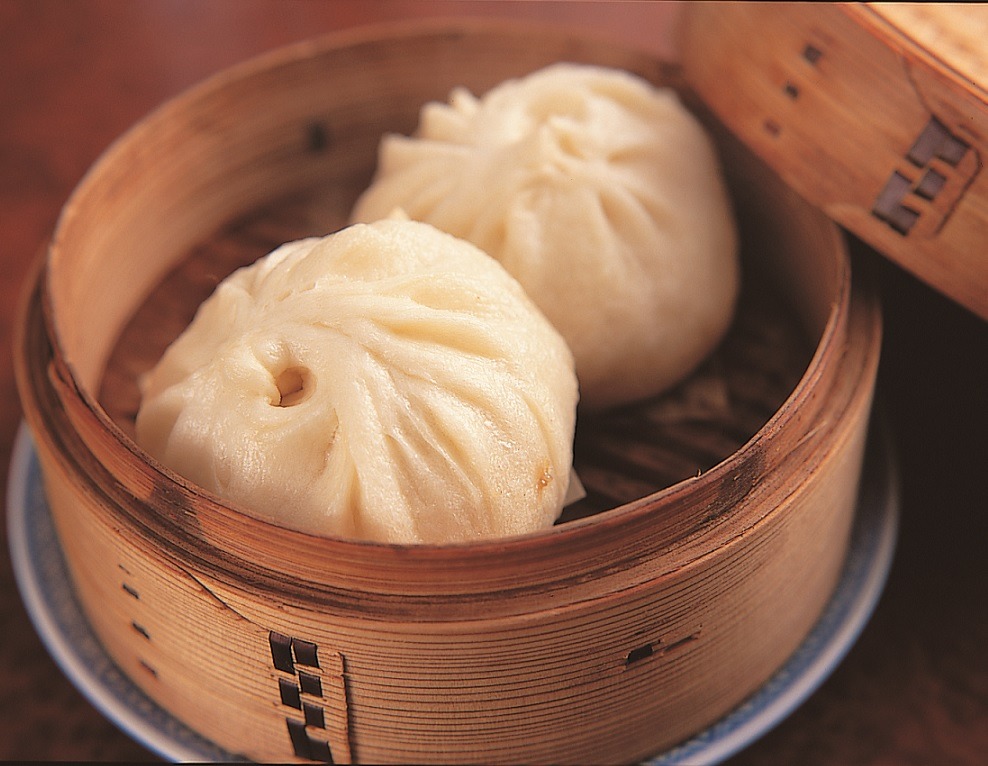たこ焼き

屋台で買って、気軽に街角で食べられる、大阪のファストフードの代表格・たこ焼き。歴史は意外に浅く、昭和30年代から、町に店が増え始めたと言われます。当時は、大阪湾でタコが大量に獲れていたことから、これを無駄なく使った大阪らしい食べ物だと言えるかもしれません。発案者には諸説ありますが、ルーツは、大正から昭和にかけて流行った、「ちょぼ焼」や「ラジオ焼」だと言われています。
ちょぼ焼きは、今のたこ焼き器を彷彿とさせる、半円の窪みを作った銅板や鉄板に、水で溶いた小麦粉を流し入れ、紅ショウガやコンニャク、ネギと醤油を入れて焼いたものです。駄菓子屋などで売られ、子どもたちのオヤツ的存在だったのでしょう。これをヒントに生まれたたこ焼きは、小麦粉を水ではなくだしで溶き、タコを加え、大人も手軽に食べられるものへと進化しました。

生地、味付け、焼き加減で味が異なり、シンプルながら奥が深い料理です。ソースやマヨネーズ、青海苔、カツオ節をかけて食べるスタイルは戦後、お好み焼きの影響を受けたものとされています。
屋台で鉢巻き姿のお兄さんが、錐でクルクルとひっくり返して球状に仕上げる様は、見ていて飽きません。竹製の舟に並べられたたこ焼きを、爪楊枝で指してアツアツを頬ばる。外側はカリッと中はとろりとしているのが美味しいたこ焼きとされています。
大阪では、各家庭に一つはたこ焼き器がある、と都市伝説のようにまことしやかに言われているほど、家庭でもたこ焼きを作ります。
ちなみに、お隣の兵庫県明石市で生まれた「明石焼き」は、まな板上の木皿に軟らかいたこ焼き状のものが並んで供されます。お澄ましのようなだしに浸して食べ、明石では「玉子焼」と呼ばれます。
その他のおすすめグルメ
-
 うどん(うどんすき)
うどん(うどんすき)大阪のおうどんは、軟らかい口当たりの麵と、それに優しく寄り添う昆布とカツオ節のだしとのハーモニーが魅力です。
-
 大阪すし
大阪すし大阪すしの代表格は箱寿司です。具材を酢飯と共に型に入れて押し固める「押し寿司」の一つです。
-
 オムライス
オムライス胃の悪い常連客が毎日オムレツと白ご飯を食べているのを不憫に思った店主が、ケチャップライスを薄焼き卵で包んで出したところ、客は大喜び。
-
 お好み焼き
お好み焼きたこ焼きと並ぶ、大阪人のソウル・フードです。小麦粉をだしで溶くのも同じで、具はキャベツが必須、豚肉が人気、あとはお好み焼きの名の通り、好みのままに。鉄板の上で丸く平たく生地を広げて焼き上げます。
-
 串カツ
串カツ「二度漬け禁止」で有名な大阪の串カツ。肉や野菜を串に刺し、水溶き小麦粉の衣にパン粉を付けて油で揚げます。
-
 割烹料理
割烹料理江戸時代に栄えた料亭が廃れ始め、もっと気軽に楽しめる和食店を時代が求める中、生まれたのが割烹スタイルです。
-
 紙なべ
紙なべ摩訶不思議な紙なべも大阪発祥です。紙を火に掛けるなんてと誰もが驚くことでしょう。
-
 回転寿司
回転寿司コンベヤーの上を、寿司を載せた小皿が流れていき、客は好みのものを皿ごと取って食べます。半セルフサービス型の安価で明朗会計の気軽なスタイルは、家族連れや観光客にも利用しやすく大人気を得ています。
-
 豚まん
豚まん明治維新後、中華街に伝えられた中華饅頭を日本人好みの味にアレンジしたものが始まりとされています。




